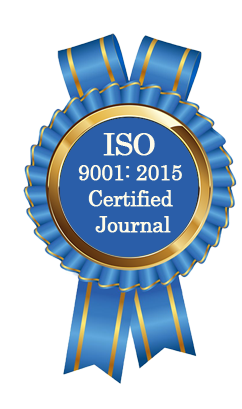| All | Since 2020 | |
| Citation | 105 | 60 |
| h-index | 4 | 4 |
| i10-index | 3 | 2 |
WJAHR Citation 
Login
News & Updation
Best Article Awards
World Journal of Advance Healthcare Research (WJAHR) is giving Best Article Award in every Issue for Best Article and Issue Certificate of Appreciation to the Authors to promote research activity of scholar.
Best Article of current issue
Download Article : Click here
Indexing
Abstract
ESTIMATION OF PROGNOSTIC FACTORS FOR NON-ALCOHOLIC FATTY LIVER DISEASE USING THE LIVER FAT SCORE IN PATIENTS AT AL-RIFAI TEACHING HOSPITAL IN THE AL-RIFAI DISTRICT OF DHI-QAR, IRAQ
Sadeq Lafta Mousa Al-Zamili, Auday Abd Al-Razaq Al-Husseiny*, Hatim Abdalkareem Jabbar Al-Shwilly
ABSTRACT
Background: Non-alcoholic fatty liver disease (NAFLD) is a highly prevalent condition with varying severity. Non-invasive methods like liver function score (LFS) assist diagnosis but their accuracy across disease stages requires further evaluation. Objectives: To evaluate LFS sensitivity compared to ultrasound and analyze biochemical differences across steatosis grades and in discordant LFS/ultrasound results. Secondary aims were assessing correlations of LFS and biomarkers and influence of comorbidities on LFS accuracy. Methods: 71 adult NAFLD patients were recruited. Hepatic steatosis was graded by ultrasound as mild (U1), moderate (U2) or severe (U3). LFS, ferritin, mean platelet volume and neutrophil-to-lymphocyte ratio were measured. One-way ANOVA compared groups. Pearson’s coefficients evaluated correlations. Results: LFS demonstrated lower sensitivity for mild (63.63%) versus moderate (70.58%) and severe (100%) NAFLD. Total cholesterol, LDL-cholesterol, AST, ALT and anemia markers significantly worsened with increasing ultrasound grade. No inflammatory biomarkers distinguished steatosis severity or LFS accuracy. High prevalence of metabolic comorbidities had no significant differences across grades. Conclusion: LFS showed adequate overall accuracy for NAFLD but substantially lower sensitivity for mild disease, highlighting complexity in early diagnosis. Worsening biochemical aberrations were associated with more advanced illness on imaging. The lack of reliable inflammatory indicators represents an area for further research.
[Full Text Article] [Download Certificate]
